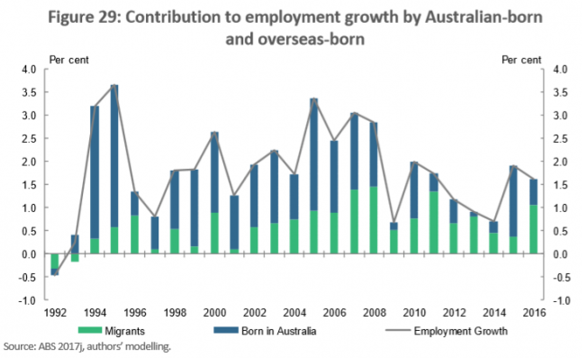Speaking to a Senate committee yesterday, Treasury secretary Steven Kennedy admitted that the sharp reduction in foreign workers due to Australia’s closed international border will put upward pressure on wages:
Dr Kennedy… indicated that border closures and the loss of foreign workers to fill skills gaps might result in wages growing faster than the budget’s forecasts.
“Wage growth could respond more quickly to a fall in the unemployment rate if we see a mismatch in the skills employers are looking for and those looking for work,” Dr Kennedy said.
“There is certainly some upside to those wages.”
“We do see wages strengthening especially if the unemployment rate is driven down below pre-COVID-levels.”
It is like the Australian Treasury has suddenly discovered the laws of gravity. That is, not importing 180,000 to 200,000 foreign workers into the economy every year to compete for jobs against locals reduces labour supply, increases worker bargaining power, and lifts wages.
This should have been obvious from the outset. The Treasury’s own immigration propaganda report, Shaping a Nation, explicitly acknowledged that the overwhelming majority of Australia’s jobs growth went to migrants between 2011 and 2016, thus keeping unemployment elevated:
Recent migrants accounted for two-thirds (64.5 per cent) of the approximately 850,000 net jobs created in the past five years. For full-time employment, the impact is even more pronounced, with recent migrants accounting for 72.4 per cent of new jobs created.
Professor Peter McDonald released similar findings:
The permanent and temporary skilled migration policies established by the Australian Government from 1995 played an important role in meeting that labour demand…
From July 2011 to July 2016, employment in Australia increased by 738,800. Immigrants accounted for 613,400 of the total increase…
The Treasury has itself advised that Australia’s unemployment rate needs to fall to 4.5% or below to generate significant enough labour market tightness to lift wages. Obviously, this is an fool’s dream when hundreds of thousands of migrant workers flood the economy every year.
The question then arises: why is the Australian Treasury’s Centre for Population itching so hard for a return to pre-COVID levels of immigration?
If pre-COVID level immigration is restored, an extra 180,000 to 200,000 workers would join the Australian labour market every year, driving up unemployment and placing downward pressure on wages (other things equal). This, in turn, would make Treasury’s 4.5% unemployment target an impossible goal.
Australians experienced a decade-plus of crushed wages and living standards on the back of mass immigration. This failed policy must not be allowed to return.



